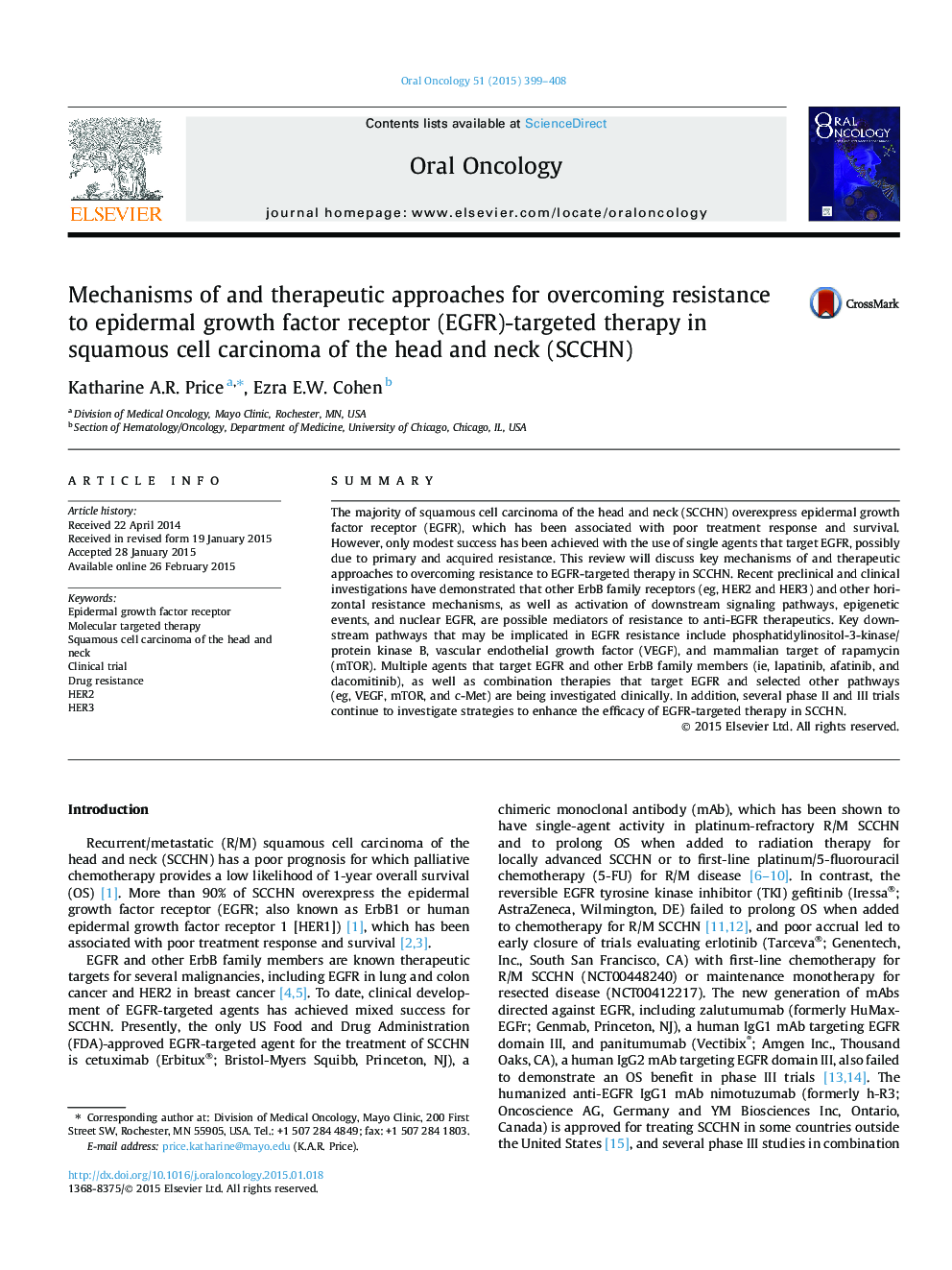| Article ID | Journal | Published Year | Pages | File Type |
|---|---|---|---|---|
| 6054655 | Oral Oncology | 2015 | 10 Pages |
Abstract
The majority of squamous cell carcinoma of the head and neck (SCCHN) overexpress epidermal growth factor receptor (EGFR), which has been associated with poor treatment response and survival. However, only modest success has been achieved with the use of single agents that target EGFR, possibly due to primary and acquired resistance. This review will discuss key mechanisms of and therapeutic approaches to overcoming resistance to EGFR-targeted therapy in SCCHN. Recent preclinical and clinical investigations have demonstrated that other ErbB family receptors (eg, HER2 and HER3) and other horizontal resistance mechanisms, as well as activation of downstream signaling pathways, epigenetic events, and nuclear EGFR, are possible mediators of resistance to anti-EGFR therapeutics. Key downstream pathways that may be implicated in EGFR resistance include phosphatidylinositol-3-kinase/protein kinase B, vascular endothelial growth factor (VEGF), and mammalian target of rapamycin (mTOR). Multiple agents that target EGFR and other ErbB family members (ie, lapatinib, afatinib, and dacomitinib), as well as combination therapies that target EGFR and selected other pathways (eg, VEGF, mTOR, and c-Met) are being investigated clinically. In addition, several phase II and III trials continue to investigate strategies to enhance the efficacy of EGFR-targeted therapy in SCCHN.
Keywords
Related Topics
Health Sciences
Medicine and Dentistry
Dentistry, Oral Surgery and Medicine
Authors
Katharine A.R. Price, Ezra E.W. Cohen,
